Alone with Child 「語星同行」
Self-usable training platform for autistic children
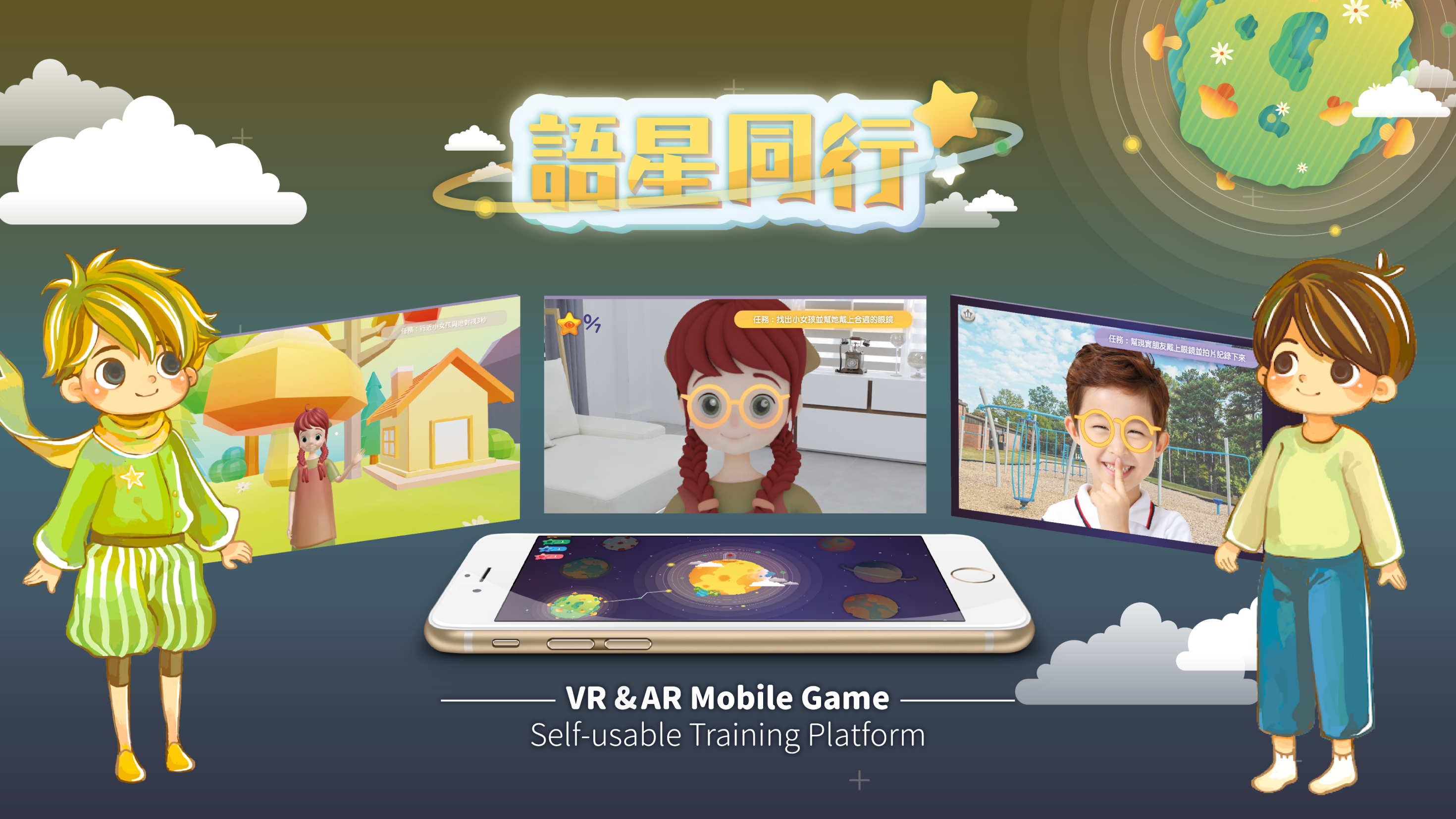
Project Structure
Capstone Project
8 months
Team of 2
Cwing, Karrie (me)
- We divided the work equally in every stage
- Cwing is more focused on the visual
- I focused on more game development and animations
Research & Define
TMost autistic children have many struggles with making eye contact, and they are poor in social skills. 34% of autistic children have emotional problems, and 90% of them in mainstream schools with social difficulties. Lacking knowledge and skills in communication makes them feel difficulties in society.
Autistic children
They...
- IQ is not lower than others
- have emotion/ thought
- can be active/ passive
- have their will follow the rules
- have emotion
- focus on specific things
But they...
- can't express their feeling
- not good at communication
- being stubborn to follow their own rules
- can't feel others' emotion
- hard to change their focus on communication
Autism is not a disease. Most of them are weak in communication skills. They can’t feel and identify others’ emotions or messages and have difficulties on keep focusing on communicating with people.
Receiving skill in communication process
“Communication process is a chain made up of identifiable links. The chain includes sender, encoding, message, receiving, decoding, and feedback.” Robert Kreitner said that the communication process includes a few stages: receiving, decoding, and feedback.
Receiving is to receive the percept signals from the sender by hearing and seeing. This stage simply involves the reception of the sender’s message by the receiver. It is the critical stage for autistic children to start communication, and there is less existing support to teach them the skills.
Interviews and observation with autistic people
Interviewees
- Adults with autism × 2
Observation
- Autistic children × 2
- Lack of eye contact in communication
- Weak in noticing others’ emotions and can only apply the social rules in a specific environment
- Feel difficulties with self-expression
- Do not realise people are talking with them
When we first met the children, they could not focus on communication. When we try to talk with them, they have no responsibility to us. They avoided having eye contact with us. They just watched the surroundings when we were talking to them.
After playing the games with them, they became more active and tried cooperating. Also, they were more willing to speak to us with eye contact.
Therefore, we find that the game can motivate autistic children to learn communication. It can also provide a common topic for autistic children or normal people to communicate.

Autistic children have weaknesses in receiving messages and social awareness. It makes their relationship with others short-term. People may also misunderstand them, e.g. people think autistic children are indifferent and impolite.
Interviews with stakeholder
Interviewees
- Autism parent × 2
- Social workers × 2
- Applied behavioral analysis worker (ABA) × 1

The main problem of autistic children is they cannot concentrate, so they are hard to learn new things. They are weak in learning the awareness of emotions from others and social skills. They have a significant perception of themselves and unable to identify what is “You” & “I”.
Also, they are less motivated to interact with others socially or learn social skills. They do not know some of their behaviour is incorrect.
To help autistic children, the stakeholder may use some external incentives, such as rewards or calling their names to attract their attention. In order to establish a friendly relationship with autistic children, they will use face-to-face communication or use some drawing or writing for them to have self-expression. They also mention that the digital device is an excellent way to help their learning and increase their interest. However, the existing app may not be enough to help them.

The stakeholder wants high mobility tools that children can learn at home. He mentions that users always lose the existing tools, and the static images are always misunderstood. Therefore, he wants a tool to provide an interactive learning experience. He mentioned that stories could assist autistic children in learning the appropriate behaviour that is easier to understand and remember.
Existing applications
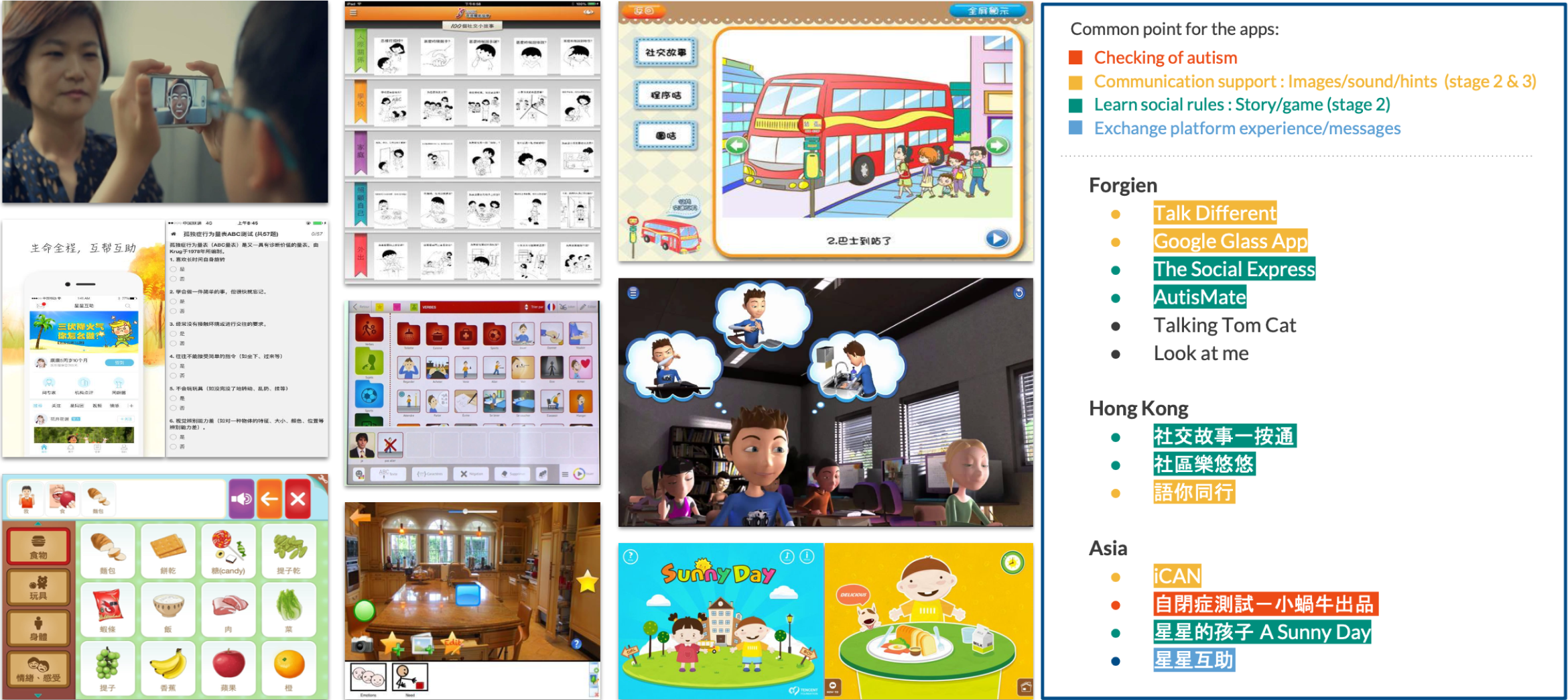
Most existing products focus less on stage 1 receiving, which is the first step to make good communication by receiving the correct message. The tangible tools are inconvenient and less motivating to learn. Also, it does not provide a chance for autistic children to apply their knowledge and social skill in reality.
Vision Statement
To motivate autistic children to reconnect with other children through the enhancing receiving stage in communication by providing an entertaining experience.

Design Concept
Alone with Child is a self-usable training platform for autistic children to train their receiving skills through VR and AR games. It aims to help autistic children enhance their communication with people by making the correct focus. Through gamification, autistic children can achieve self-learning and apply their skills in reality. In the long-term, they establish a good habit of applying the receiving skills by training in our app game.
Storytelling
We use 1st person view to give an immersive game experience to autistic children. They just like acting themselves in the game with the same personality as the little prince, who is staying alone in their world, and they are going to explore different skills and apply them to meet new friends through our app.
The story background of our game is the Little Prince, who lives on his own planet alone. He feels lonely and wants to travel around to adventure and build up his relationship. Each adventure represents different stages and areas of receiving skills.
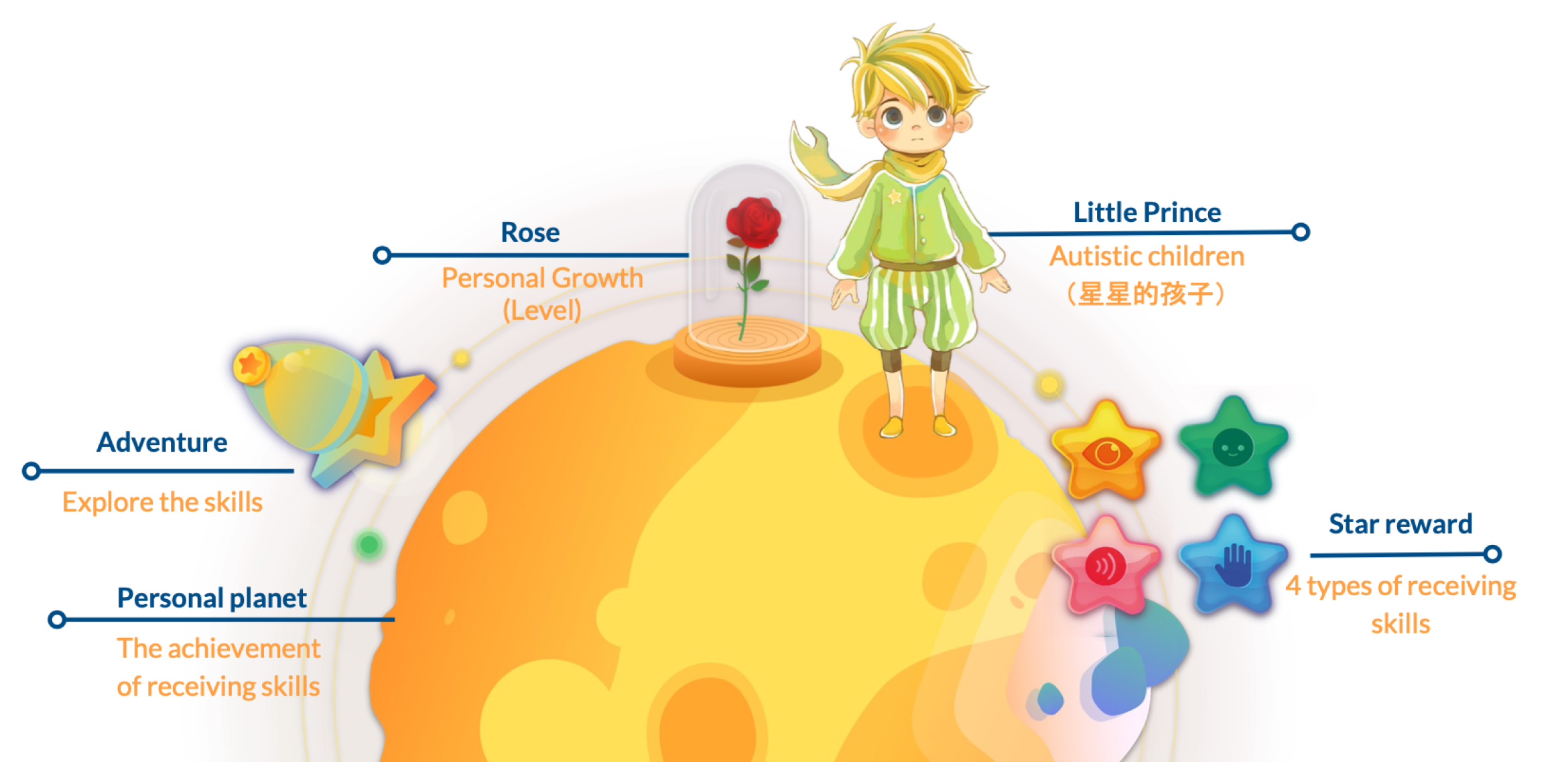
Sound guideline
We hope to provide complete training for autistic children just like a social worker or parent is staying with them. When they do not understand the learning, sound guidance can assist them.
Step by step learning
The big structure of the games is from VR to AR to reality. It helps autistic children to connect to reality step by step, from virtual target and environment to virtual target and real environment, then to real target and environment. In the real mission, they need to find the real people to interact with, and they can apply the skills they learned to connect with normal people.
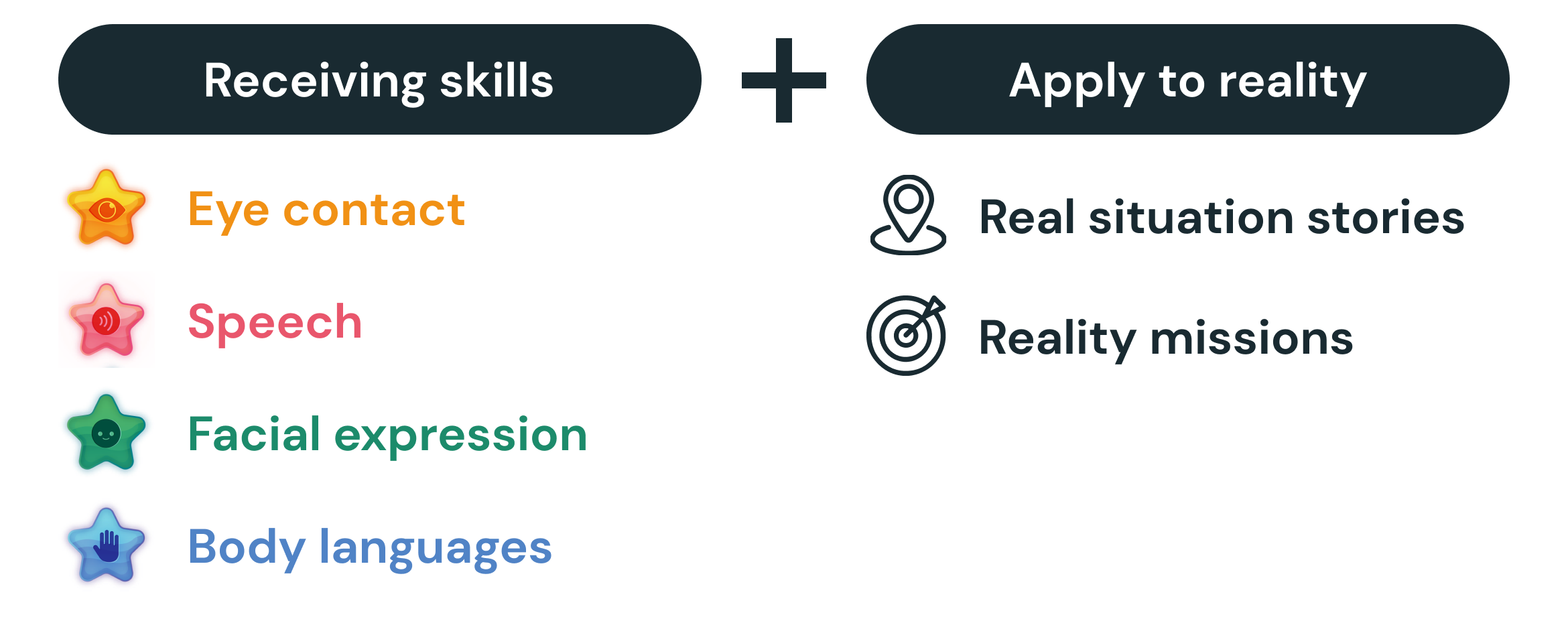
User Journey
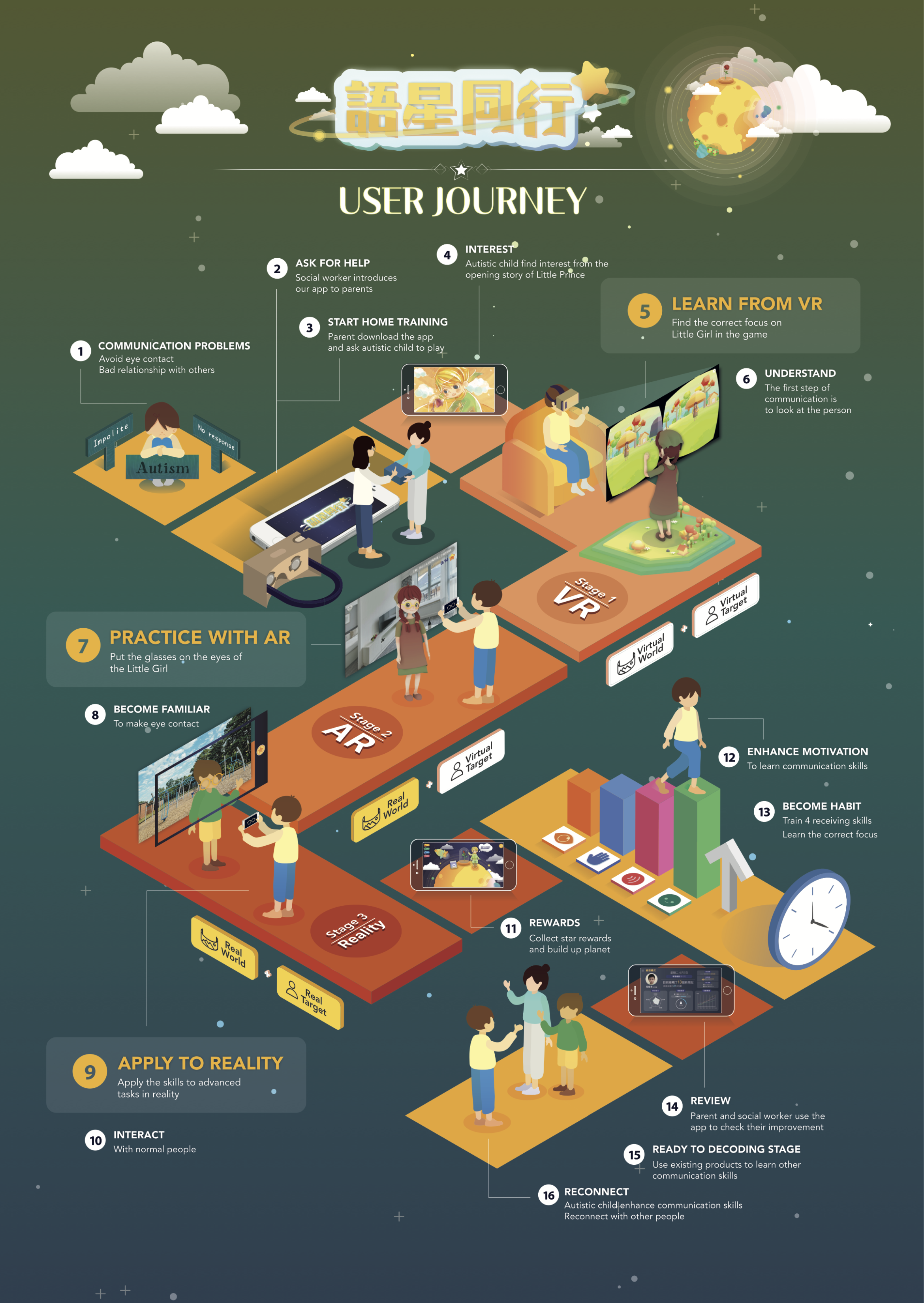
Prototyping Tools
Equipment and technology



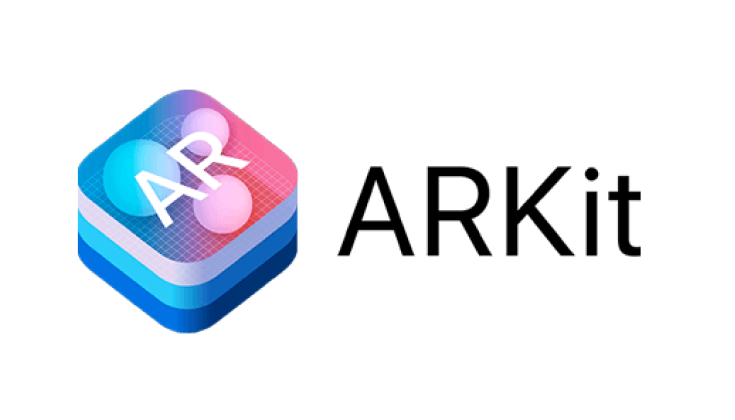

User Testing
Draft prototype

First user test with normal people
We find some normal people to test the initial design to check if they are interested in it or not.
Users concerned about autistic children have less willingness to do the reality missions if the chapter is replayable. They suggested adding a tangible device to measure the effectiveness without looking at the screen.
Therefore, we will add some tag names and provide more guidelines for hints. Also, we may apply an awards system to increase the sustainability of the game and motivate them to complete the reality missions.

Second prototype

Second user test with autistic children
We conducted the user test with three autistic children individually in Buddhist To Chi Fat She Yeung Yat Lam Memorial School. We want to observe if our app can make them become more eye contact or pay attention to people.
We found that participants felt interested in the star rewards, which can motivate them to continue the game. Also, they could complete the tasks and even apply the skills to advanced tasks without our guidelines. All of them have improved in making eye contact after playing the prototype that they are more willing to look at us and answer our questions.
We consider adding more guidelines to teach them how to start and play the game. Also, we will add special effects to motivate them and attract their attention.

Final prototype



Final user test with autistic children
We had the final user test with three autistic children individually in Buddhist To Chi Fat She Yeung Yat Lam Memorial School. We tested the game's effectiveness and participants' interest in the game. Also, we observed if they could apply their learning in reality after the gameplay.
We found that they can complete the game fluently with enthusiasm. They clearly know what they should do to complete the missions. After the gameplay, they want to replay it and are more willing to talk to us with eye contact.
This user testing proved Alone with Child effectively builds up the relationship with the autistic child and motivates them to play and learn. Through the game experience, they can absorb the knowledge of receiving skills and apply it to reality.

Results / Comments
Feedback from stakeholder
Both of them think the receiving skill is the most important stage of communication. They agree that eye contact is the first step to starting communication, and there are not enough tools to help autistic children to solve this problem. By improving autistic children’s concentration, it can enhance their learning ability and encourage them to apply their skills.
They think VR and AR can provide an immersive experience to autistic children. When autistic children get fun with the app, it will build close relationships more easily, which significantly helps the learning process. They appreciate the missions are related to reality and motivate autistic children to get in touch with normal people.

Showcase


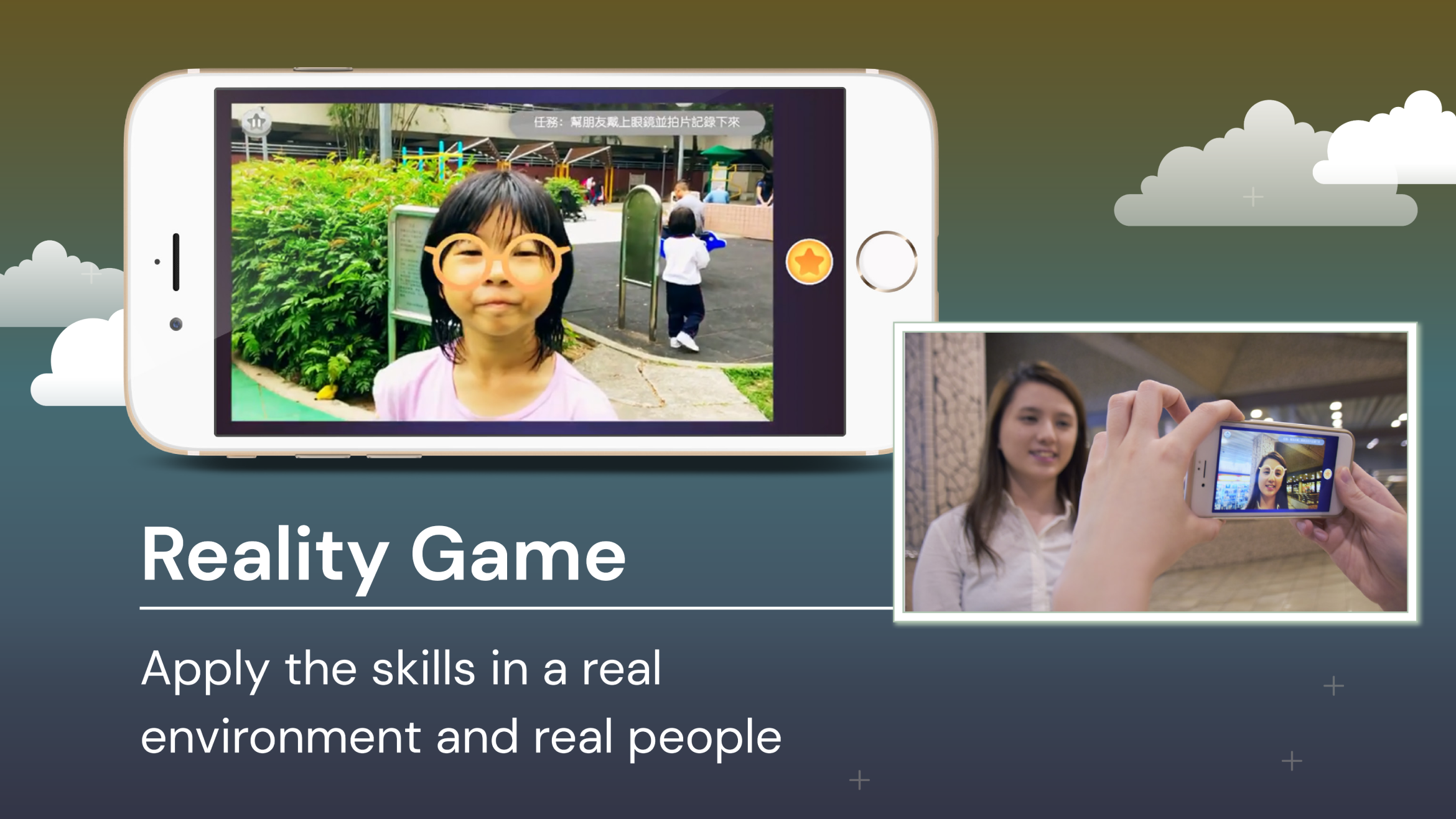
Reflections
Ways to help special needs
Through this project, I have more understanding of the difficulties of special needs people. They are not intended to act differently, but they cannot control themself. If we can put ourselves into their shoes and try to provide a little help, it helps them to achieve certain tasks and actions.
Build up the network and communication skill
We need to use our relationship to find the social workers to interview them for the search stage. We presented the idea many times to get feedback from different stakeholders to improve our design. This makes me feel all things are hard to complete without help. We should thank different people’s support, making our design unique and complete.
Chance to execute and explore my ability
This is the first time building up the VR and AR game. No app has included these two elements simultaneously before. It provides me with a chance to try this combination of different types of games, which is also a unique feature of our app. In the beginning, I was worried about if I could build it successfully or not. It is gambling to me, and I want to overcome it. Although building a workable app is not the core part of the project, it allows me to step forward and see different opportunities in myself. This experience should be important in my future to have a better me.